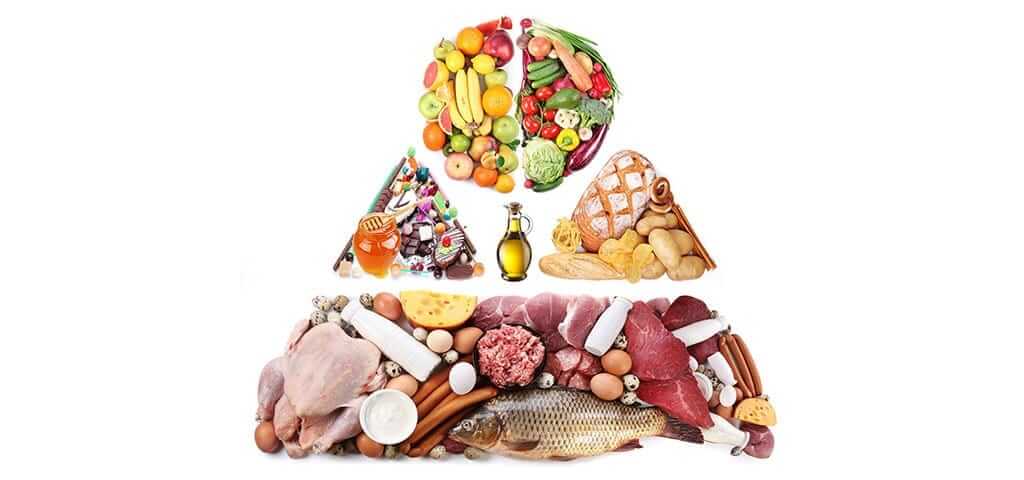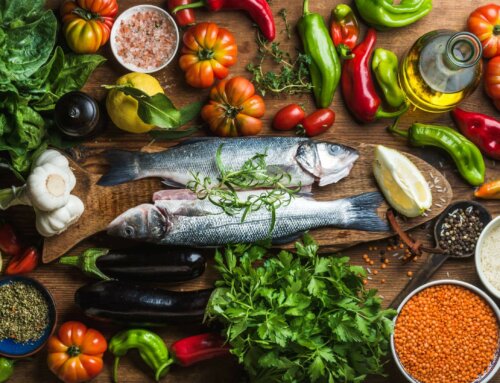It is always in the best interest of a patient with diabetes to eat a well balanced diet with healthy food choices of a variety of vegetables, whole grains and lean proteins. This also includes eating on a schedule and not skipping any meals. Depending on your specific medication regimen and activity level, you may need to add snacks. Monitoring food portion size is paramount with diabetes especially when choosing carbohydrate foods such as starches, fruits, milk, and yogurt. Staying hydrated with sugar-free/calorie-free beverages helps complete the plan. In addition, let’s look at some winning food combinations which can improve your health and immune system whether you have diabetes or not! Remember, it is possible to get nutrients and vitamins from supplements but eating food is always superior since they are better absorbed and contain nutrient mixtures.
- Protein and Vitamin K. When these foods are combined they help rebuild muscle and increase amino acids lost during exercise. Since part of a diabetes treatment plan includes exercising a minimum of five days a week for 30 minutes, these combined foods could be very beneficial. For example, eat Greek yogurt (protein) with bananas which contain vitamin K. Another combination would be eating eggs (protein) with onions, scallions, and dried herbs including parsley, basil and chives (vitamin K). Other vegetables high in vitamin K include broccoli, Brussel sprouts, turnip greens, mustard greens, spinach and kale. Add Edamame (soybean protein) to a mixed green salad or serve broccoli raab with lean ground sirloin for a perfect combination of protein and vitamin K especially after exercise. Watch vitamin K intake if you are taking a blood thinner called Coumadin; always check with your physician or dietitian to see how many greens and vegetables you are allowed with this medication. Be aware that there are new blood thinners on the market which do not have dietary restrictions including Xarelto.
- Iron and Vitamin C. Many women who are premenopausal suffer from low iron. Iron is needed to bring oxygen to the blood. Symptoms of low iron may include fatigue, weakness, always being cold and shedding hair. When iron is eaten in combination with vitamin C, the absorption rate increases. Foods high in Vitamin C include red, green and yellow bell peppers, broccoli, chick peas and tomatoes. Cook a stir-fry with these vegetables and add lean beef (iron) for a perfect meal combination. Add fresh strawberries, blueberries, raspberries or blackberries (vitamin C) on iron fortified breakfast cereals.
- Protein and healthy carbohydrates. Eating protein and good quality carbohydrates are an excellent combination especially for improved blood sugar control. Hunger is curbed when these foods are eaten in combination. Blood sugar elevation is usually blunted when protein is eaten with carbohydrates. Some winning combinations are peanut, cashew or almond butter (protein) on apple slices. Greek yogurt is high in protein and a perfect compliment with berries. Whole grain crackers with low fat cheese or low fat cheese sticks work well together. Hummus, ground chick peas, have protein but are considered a carbohydrate and are perfect with carrot sticks. Eating whole grain cereal with Greek yogurt can be a super combination. Combine a cup of fresh fruit with a handful of almonds for a delicious treat which can help blunt a rise in blood sugar. Try cottage cheese with pineapple, 2 tablespoons of raisins and a handful of walnuts, baked fish with a cup of wild rice, whole grain crackers with low fat cheese or whole grain bread with egg whites for great taste and balance.
- Good fats and flavonoids. Combining good fats with flavonoids helps the absorption of the flavonoids. Eating avocadoes, a healthy fat with leafy greens or tomatoes (lycopene) and a touch of olive oil for dressing is a great combination. Remember portion size with healthy fats since they are high in calories. Combine raw vegetables like tomatoes, spinach, and carrots with eggs to absorb additional carotenoid-alpha and beta carotene, lycopene, lutein and zeaxanthin to help reduce eye disease and possibly cancer.
- Vitamin D and Calcium. Guidelines keep changing the vitamin D requirement but obtaining it from foods is always the safest route. The latest guidelines call for 1000-1200mg of daily calcium and between 400-1000units of daily vitamin D. Often if vitamin D levels are especially low, below 25, your physician may recommend a weekly supplement of 5000 units. Combining vitamin D foods with calcium is beneficial since the vitamin D helps with calcium absorption needed for bone growth. Egg yolks and cheese contain vitamin D and when made into an omelet with leafy greens-spinach, mustard greens or kale (calcium) you get a great food combination. Milk, which contains calcium, is often fortified with vitamin D and when combined with fortified cereals is a perfect match. Make a salmon salad using canned salmon (vitamin D) and mix with plain yogurt for calcium instead of mayonnaise. Remember when taking calcium supplements that it is difficult to absorb more than 600mg at a time so divide the dose and do not take with caffeine.
- Sodium and Potassium. Sodium should be limited to about 1500mg per day when you have diabetes. The average American eats between 3500-5000mg of sodium a day. Many people are salt sensitive which is an added reason for hypertension, heart attack, heart failure or stroke. Sodium is hidden in processed, canned and snack foods. It is found in bread, poultry, condiments, deli meats, pizza, canned soups and diet sodas. You may be eating high quantities of sodium without ever using the salt shaker. When sodium is combined with potassium rich foods, it can be released thru the kidneys. Multiple studies have shown eating less sodium and adding more potassium can help lower blood pressure. Potassium also aids in fluid and electrolyte balance. Fish, white mushrooms, acorn squash and potatoes with the skin contain potassium. Yogurt, bananas and leafy greens are a good source of potassium. Beans are a good source of potassium and magnesium and also contain fiber which can help with blood sugar fluctuation.
- Green tea and lemon juice. Green tea contains catechins which are powerful antioxidants. Drink green tea with lemon or citrus juice or slices to limit the breakdown of the catechins which helps the body absorb even more. These antioxidants help the immune system.
- Fish and wine. Studies in Italy have shown that the polyphenals found in white or red wine when combined with fish may help increase the absorption of the Omega 3 fatty acids from the fish.
There are so many wonderful ways to combine foods and get all the nutrients you need on a daily basis. If you feel you may not be getting them from your diet, check with your health care provider about possible supplements. Good luck!
NOTE: Consult your Doctor first to make sure my recommendations fit your special health needs.







Leave A Comment